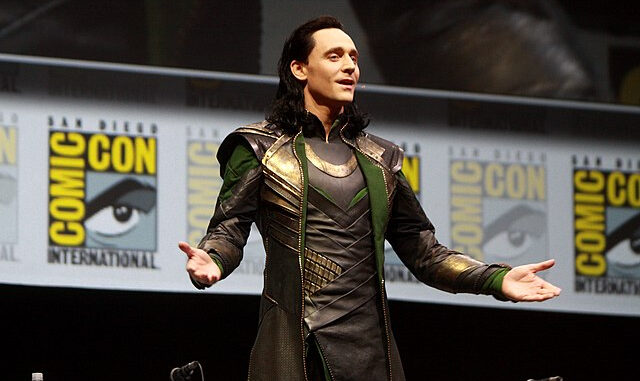
Hannah Peters | Staff Writer
In all its glorious purpose, Loki season two has arrived. Coming back from a hiatus that lasted over two years, the elements of time, mystery and world ending drama come out to play once more in the Disney+ spin-off series starring Tom Hiddleston.
In cable-TV like fashion, episodes are set to air on a weekly basis every Thursday, the first episode having made its debut on October 5. Akin to the first season, the second installment will contain six 45-60 minute episodes.
The new season picks up right where it left off [SPOILERS ] – with a frantic, confused and slightly heartbroken Loki arriving in the TVA after being kissed and then pushed through a portal by Sylvie (Sophia Di Martino): a Loki variant, previous enemy and potential lover. Shown in the recap at the beginning of the first season, Sylvie does this in order to kill ‘He Who Remains’ (Jonathan Majors) at his residence, ‘The Citadel at the End of Time.’
In doing so, Sylvie exposes the Sacred Timeline which was created and protected by He Who Remains to prevent countless versions of himself from starting another multiversal war. Before his death, he had given Sylvie and Loki two options: to take his place as dictator of time and the TVA or kill him and allow the process of war to begin again.
Season two is the aftermath of this choice – the Sacred Timeline is branching, creating an influx of timelines and chaos at the TVA. Now, an almost-certified member of the TVA, Loki works alongside Mobius (Owen Wilson) to remedy the chaos, reforming the comically disordered but lovable duo formed in the season prior.
Introduced early in the first episode of season two is Ouroboros (Ke Huy Quan), a new and prominent character evidenced by the title of the first episode: “Ouroboros.” As author of the TVA Guidebook and head of the ‘Repairs and Advancement’ department at the TVA, Ouroboros quickly takes on a key role after Mobius recruits him to fix Loki’s “time slipping” problem.
A Greek word, Ouroboros represents an ancient symbol that “depicts a snake or dragon devouring its own tail and that is used especially to represent the eternal cycle of destruction and rebirth,” according to Merriam-Webster. Although this isn’t explicitly pointed out until the fourth episode, this meaning is a central theme and plot point for this new season.
Revealing and clearing up plot altering details after the fact seems to be a trend for the Loki series. In dealing with time and the multiverse, Loki’s plot line can be hard to follow at times and sometimes outright confusing.
For instance, [SPOILERS] Miss Minutes goes on the run, unable to be tracked by the TVA (despite being a form of AI) and TVA agents mourn the loss of destroyed despite their regrowth.
This may be done in part to create mystery and suspense, a tactic clearly used in Loki’s torture scene where audience members are kept in the dark about whether or not Loki returned to his darker side, which was showcased in Marvel’s earlier cinematic phases.
With Loki’s past story line essentially erased from actions taken in the 2019 film “Endgame,” Loki’s character development is something the writers have clearly been intentional with throughout the series. Loki starts off the series as a villain, fresh from laying siege on New York City in the 2012 portion of canon. However, this version of Hiddleston’s character is not the one that originally won the hearts of so many fans.
To make up for this, Loki’s character transformation happens at a much faster rate than in the original story line: he alludes to his previous villain era as if a faint memory of the past, asking Mobius, “Do you remember that time I was so angry with my father and brother I went down to Earth and held the whole of New York City hostage with an alien army?”
While Loki has clearly established himself as more of a hero than villain in this series, executive producer Kevin Wright tells the Digital Spy that he and director Kate Herron wanted to ensure they were adding to the characters and not repeating the same story.
“I think it was about deepening the world [and] deepening the characters…we are pushing all of these characters into completely new territory,” said Wright.
If there’s one thing for certain, “Loki” dreams big. With visits to exciting time periods like the 1983 Chicago World Fair and 1977 London, this new season is sure to keep audience members captivated and on their toes.
With the final episode still on its way, there’s no doubt that “Loki” will not stop the iconic mischief for this Norse god anytime soon.

